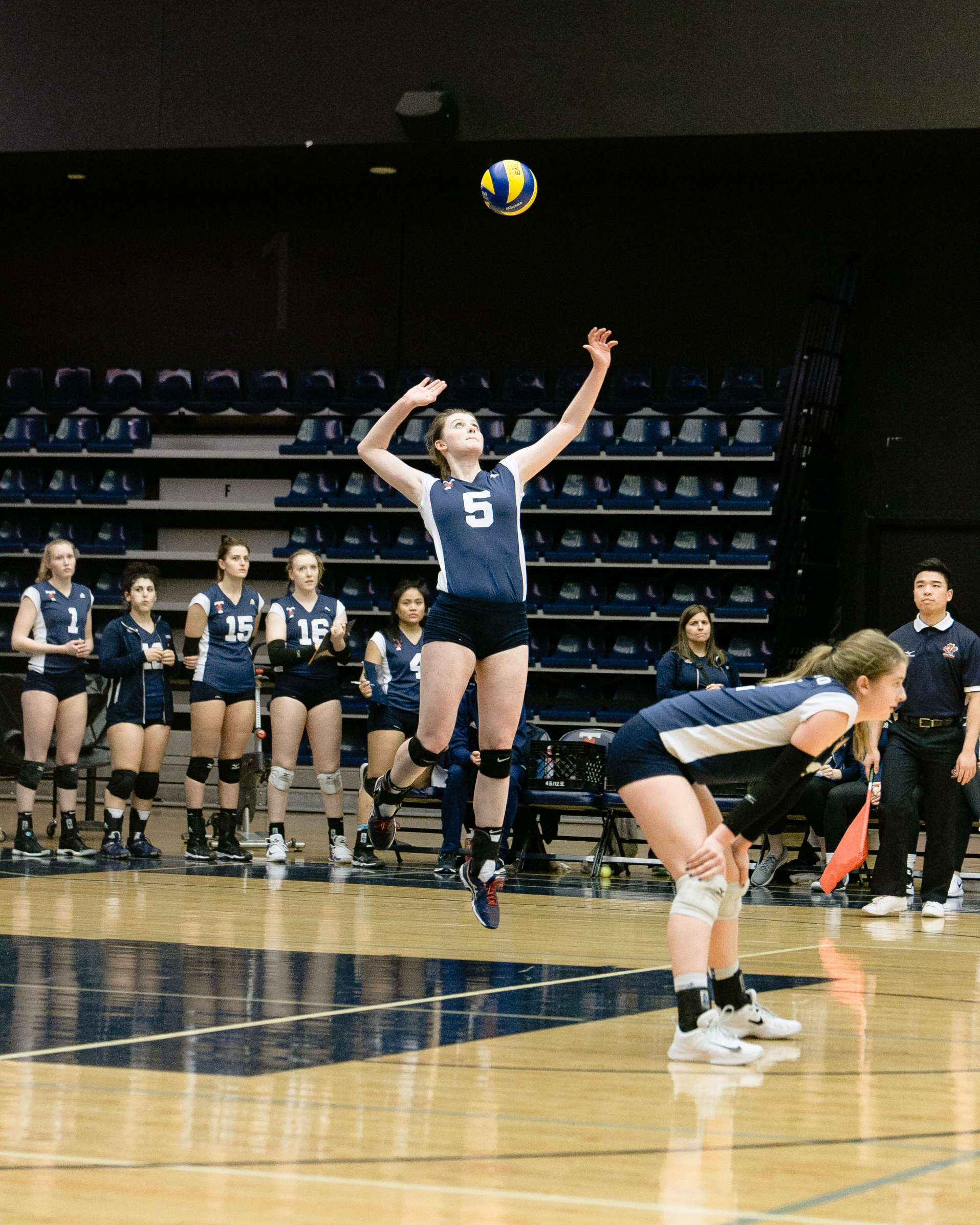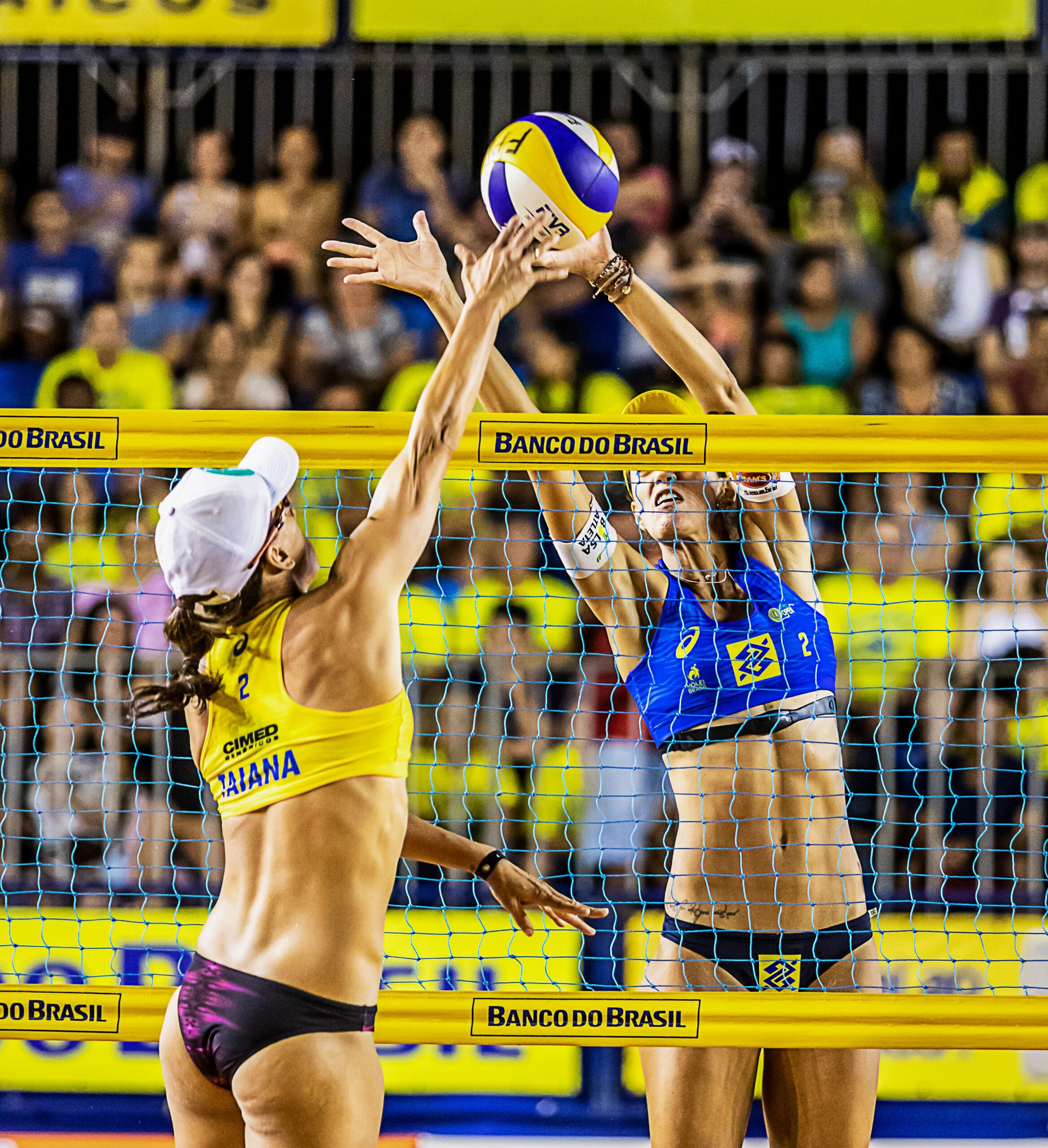What Is Sideout In Volleyball?

The game of volleyball has evolved over the years, and so do the meanings of the terminologies associated with the game. One such volleyball jargon which has changed its meaning is “sideout.”
In today’s volleyball, sideout means the termination of a team’s right to serve. But in the old volleyball rules that are not applicable now, sideout meant that only the serving team could score. So even if the receiving team wins the rally, they will only win the serve, after which they will be able to score.
Explainer: What were the Old Sideout Rules in Volleyball?
See this example to clearly get the idea of old sideout rules.
You might have heard people fighting over voting rights or property rights, but old sideout rules literally meant that volleyball players had to fight to win the “serving right.”
Take it this way:
If Team A is serving the ball, Team B will not be able to score on this server. This means that if Team A goes for the kill, their score will be counted.
But if Team B goes for the kill, they will only get the right to serve the ball (and will not win the point).
After winning the right to serve, Team B will be the one serving the ball, so only they can score on this rally, and Team A will fight to get the serving right back, so they can continue to score.
Why Are the Old Sideout No Longer Applicable?
Some of the reasons for canceling the old sideout rules are:
Old Sideout Rules Made the Game Longer
They could make the volleyball game extremely lengthy. Consider a scenario where the serving team is unable to score, and the receiving team is consistently scoring.
Whichever team serves loses the rally, but the sideout rule is not ticking the scoreboard. The game can easily get stagnant for a long time.
Consider that two teams are playing the game, which is set to be over before 1 pm, after which another match is scheduled on the same court.
Now, what if the match just goes on with teams continuously siding out each other without winning the point?
The match will go on and on, and the whole schedule of the court gets disturbed.
What about fans who came to see the game but are just seeing unreasonably lengthy games due to the sideout rules?
Obviously, this will be too repelling for the fans, who spare their precious time to come and see the game.
Even worse will be the situation for broadcasters who have to cast the big games live on TV.
What about the broadcasting budget for big international games that get longer due to sideout rules? Most importantly, what about the ad budget which advertisers set according to the length of the game?
All in all, the whole experience of the volleyball game was going to be destroyed, and everything would have been pushed into chaos in the worst-case scenario under the sideout rules.
So, volleyball lawmakers realized that it was better for them if they eliminated this rule, and they did great to the game by doing it (at least in my opinion).
Undue Advantage for Serving Teams
Serving team used to get an unfair advantage with the old sideout rules. Consider it this way:
In the old rules, the efforts of the receiving team in blocking the serve, passing it brilliantly, and smashing it on the court of the serving team would get wasted just because they could not score when they were not serving.
This was obviously demotivating for the receiving players whose hard work couldn’t earn them the score.
In those cases, the scoreboard might not depict the true potential of both teams, so a deserving team might end up losing the game.

What is Rally Scoring System which is Introduced By Rulingout Sideout?
In modern-day volleyball, the rally scoring system is used to decide the winner of every rally. Unlike old sideout rules where only the serving team could have won the score, any team can score against their rivals in the rally scoring system.
This means that whenever any team has served the ball, the rally starts, which cannot be ended until one team scores a point.
What are the Benefits when you Sideout your Opponent?
When you are serving the ball, you have some advantages over the other team.
First of all, you have the opportunity to score aces (the points scored during serve), which is not possible for the other team. So whenever your opposite team sideout you, you must not give them aces, as it will hurt your team.
Here are all the ways to deny aces to your opponent.
Also in any professional volleyball game, every player knows the strengths and weaknesses of their opposing team. If your rivals do not have great passers, you get an opportunity to set the tone for the match after siding out your team.
Also in any professional volleyball game, every player knows the strengths and weaknesses of their opposing team. If your rivals do not have great passers, you get an opportunity to set the tone for the match after siding out your team.
Why is the term Sideout Still Used in Volleyball if the Old Rules are Not Applied Anymore?
It’s easy to say that a team has sideout their rivals instead of saying this lengthy sentence:
“Our team has won the rally, so the opposite team has lost their right to serve, and we are gonna serve the ball now.”
Isn’t it?
Just to facilitate the players (and coaches, fans, and commentators), the whole sentence is replaced with a single magical word, “sideout.”
How Does the term Sideout Used in Modern Day Volleyball?
In modern-day volleyball games, the term sideout can be used in various aspects, including commentaries like these:
(Imagine a scenario where USA and China are playing a volleyball game against each other, so commentaries can go somehow this way)
- Team USA has made a brilliant serve, but the Chinese libero has perfectly passed the ball to the setter, who sets the beautiful pass for the smasher. And the smasher goes for the kill. Chinese has sideput Americans and they will be the one serving the ball now.
- Team China is serving now, and the American libero fails to pass the ball successfully. The US didn’t sideout China, so China will retain its right to serve.
Final Thoughts
The only difference between the old and new sideout term is that any team can score in a rally in modern-day volleyball.
Do you think that old sideout rules were better? Or do you believe that every team should have the opportunity to score in any given rally? Let us know your thoughts in the comment section below.

Ahmed is the founder of Ball and Net Sports, a platform where he writes about volleyball.
As a professional volleyball player who has participated in various national and international level volleyball competitions, he loves to teach other volleyball enthusiasts about the game.
He is now a professional volleyball coach who organizes volleyball camps and social events for talent hunting for top volleyball teams.
As a volleyball talent-hunting specialist, he loves to teach people how they can make their game better in the fast-paced volleyball environment where it is extremely difficult to get quality content free of cost.



